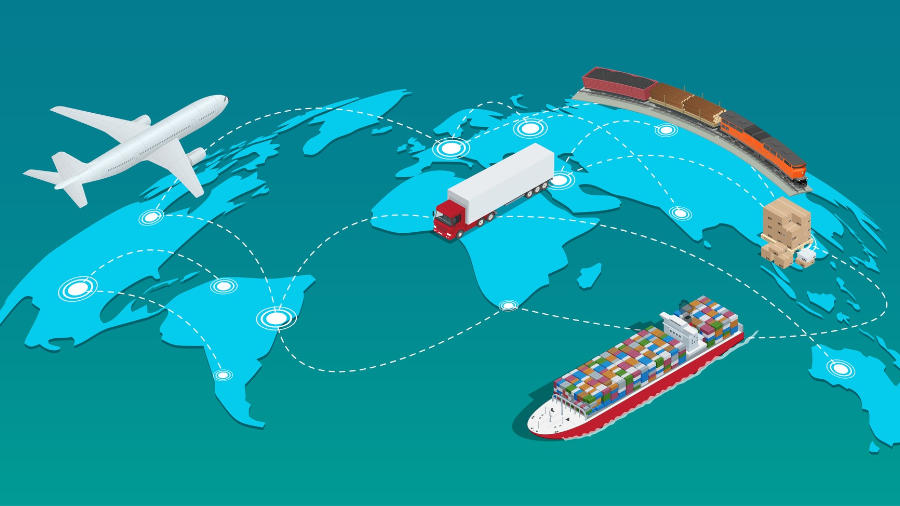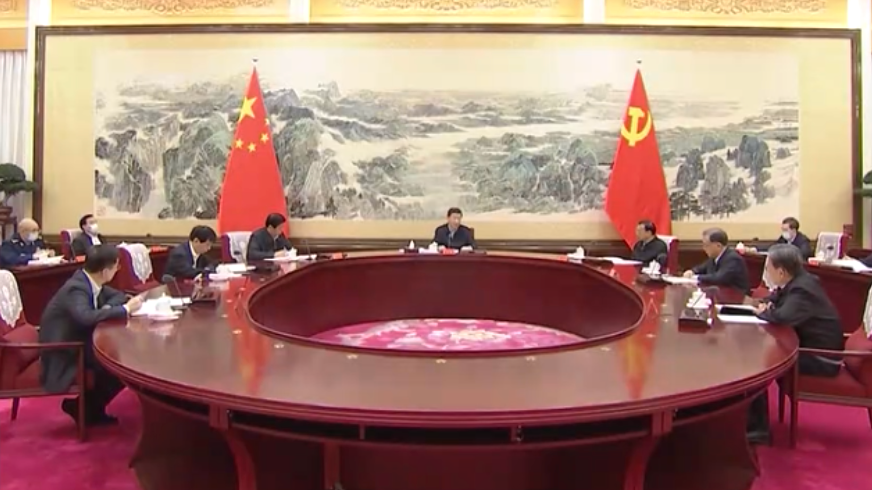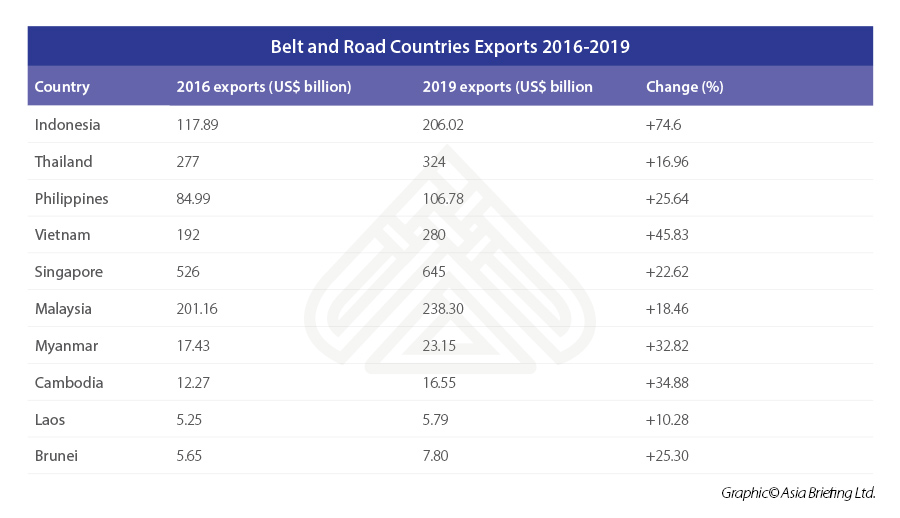China to Continue Multilateral Trade Development Policy Along the Belt and Road Initiative In 2021 – More EU Nations to Sign BRI MoU?

Op/Ed by Chris Devonshire-Ellis
- Central Government’s “Economic Work Conference” just held in Beijing
- New alignment between domestic and foreign trade markets
- China foreign trade up 1.8% in 2020
- BRI and Dual Circulation Strategy are key trade issues
The Chinese Government’s “Central Economic Work Conference” was held from December 16-18, and outlined specific tasks for 2021, saying the country will promote high-quality growth, work to ensure the economy runs within an appropriate range and pursue high-level opening-up.
Wang Wentao, China’s newly appointed commerce minister has said that China will widen high-level opening-up and intensify multilateral economic and trade cooperation in 2021 to ensure sustainable economic growth. The government will pursue supply-side structural reform as the main task while emphasizing demand-side management next year, creating a dynamic balance between supply and demand based on higher standards, he said.
In addition to building a modern commercial circulation system and developing a strong domestic market, Wang said the government will implement a broader and deeper opening-up to the global market and allow domestic and overseas markets to better reinforce each other to facilitate “dual circulation” a core part of China’s new national development and trade strategy.

Wang Wentao speaks at the Central Economic Work Conference
The Dual Circulation Strategy is aimed at changing China’s economy from a producer economy to a consumer economy. What it means is that China is looking to Chinese consumer’s domestic demand on one hand, while simultaneously developing conditions to facilitate foreign investment and boost production for exports on the other. The ‘dual’ nature of the concept refers to the parallel emphasis on an ‘internal circulation’ and an ‘international circulation’, and a shift towards becoming a demand and innovation-driven economy.
The implications of this have not yet sunk in overseas. Chinese Finance Minister Wang Yi, addressing the Belt & Road Forum two weeks ago stated quite expressly that: “This paradigm is aimed at promoting mutual openness and mutually reinforcing development between domestic and international circulations. It will fully unlock China’s market potential and facilitate greater opening-up. China has a population of 1.4 billion and a middle-income group exceeding 400 million. This year, the value of its domestic retail market will surpass US$6 trillion. In the coming decade, the total import of goods into China is estimated to top US$22 trillion.”
Wang Wentao said that China will make full use of both domestic and international market resources to advance the coordinated development of domestic and external demand, imports and exports, foreign direct investment, and outbound direct investment.
Under its plan, the Ministry of Commerce will work harder next year to stabilize foreign trade and investment, enrich economic and trade cooperation with partners related to the Belt and Road Initiative and boost the integration of domestic and foreign trade.
Wang said China’s economic growth has reached several historic achievements during its 13th Five-Year Plan period (2016-20), such as becoming a giant consumer market in its own right, a key trading power, an attractive destination for global capital and an active cross-border investor these past five years.
Apart from mitigating the impact caused by the COVID-19 pandemic this year, Wang said China has firmly supported multilateralism, actively participated in global economic governance, effectively responded to economic and trade frictions with the United States and heightened business ties with many countries and regions in 2020.
The ministry’s meeting put forward policies of stimulating domestic demand and targeting demand-side growth. These moves are vital for the country to form a strong domestic market and boost foreign trade.
The dual-circulation development paradigm will also enable China to fully unleash its market potential, providing more business opportunities across the globe as Chinese consumers wish to buy and have the income. This is great news for international manufacturers and exporters looking at the China market. As I pointed out in the article A New China For 2021 amendments to China’s Foreign Investment Law and a relaxation of the 2020 Negative List, which determines foreign access to Chinese markets, are also repositioning the country as foreign investor friendly.
Despite the disruption caused by the pandemic, China’s January-November foreign trade amounted to 29.04 trillion yuan (US$4.44 trillion), up 1.8 percent on a yearly basis, while FDI in China grew 6.3 percent year-on-year to 899.38 billion yuan (US$137.49 billion) during the same period, according to the latest data released by the General Administration of Customs and the Ministry of Commerce.
In one of the latest efforts to open its market and boost trade, China signed the Regional Comprehensive Economic Partnership agreement, the world’s largest free trade deal, with the 10 member economies of the Association of Southeast Asian Nations, as well as Japan, South Korea, Australia, and New Zealand in mid-November.
The country will also advance talks on the Comprehensive Agreement on Investment, or CAI, with the European Union at its own pace with a view to reaching a comprehensive, balanced, and high-level pact, the Ministry of Commerce said. The CAI aims to provide more opportunities and advanced institutional guarantees for bilateral investment. The conclusion of the agreement requires both parties to work together and meet each other halfway, said the ministry. The two parties have declared that they have both given “political approval” to the deal, suggesting that this time around an agreement may well be achieved.
Wang Wentao and Wang Yi’s comments underline the continuing development of the Belt and Road Initiative as a series of dynamic trade corridors and illustrate it remains a key part of China’s Foreign Policy.
BRI member states have seen exports increase, including those in ASEAN, and data from the World Bank’s TDC360 show that ASEAN’s exports increased by 30.7 percent. Although this cannot be fully attributed to the BRI, the BRI has helped accelerate the shift in global supply chains.
Furthermore, concerns that BRI members would be swamped with cheap Chinese products have not materialized. Complete 2020 data is not yet to hand, but as we can see, when it comes to China’s closest neighbors in ASEAN, exports from these countries to China increased in the past three years by an average of 30.74%, or 10% per annum. It is a trend that looks set to continue under the new Dual Circulation policy.

It is a similar trend in the European Union, where we pointed out that EU countries who had signed off a BRI MoU with China have seen their exports rise by 5% faster than those who have not. That analysis can be found here.
On a global basis, we tracked all 135 countries that are members of the BRI and found that on average, their exports had increased by 28.8% in the same 2016-2019 period. A full analysis and details of how each country fared can be found here.
Clearly the Belt & Road Initiative is here to stay and is an integral part of China’s policy. With the EU about to do a deal with China, and the UK having left, interesting developments as concerns new European nations joining the BRI could well arrive in 2021.
Related Reading
About Us
Silk Road Briefing is written by Dezan Shira & Associates. The firm has 28 offices throughout Asia, and assists foreign investors into the region. For strategic advisory and business intelligence issues please contact the firm at silkroad@dezshira.com or visit www.dezshira.com





